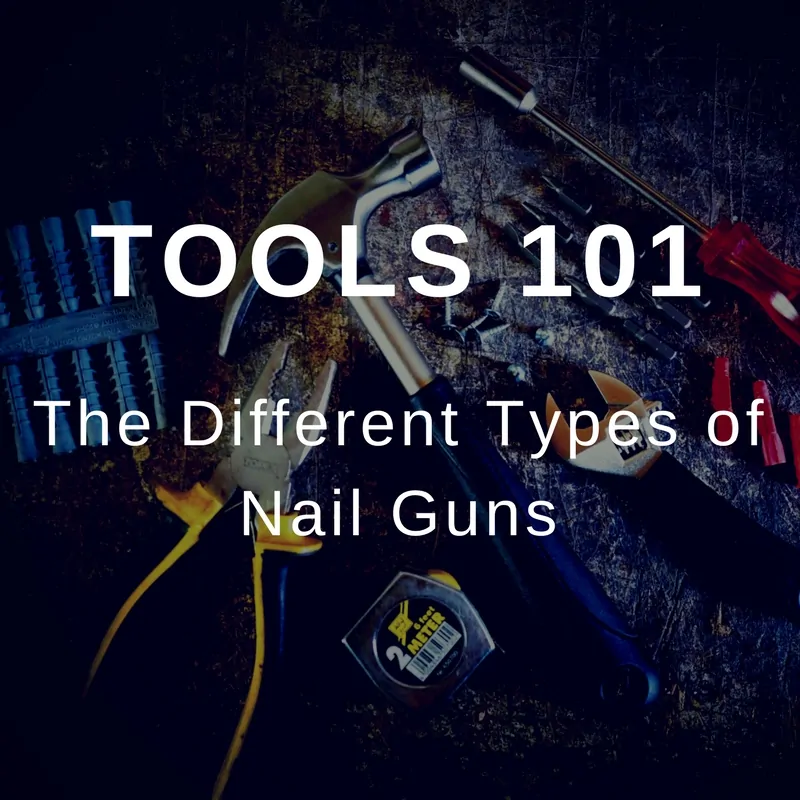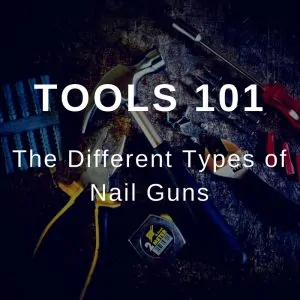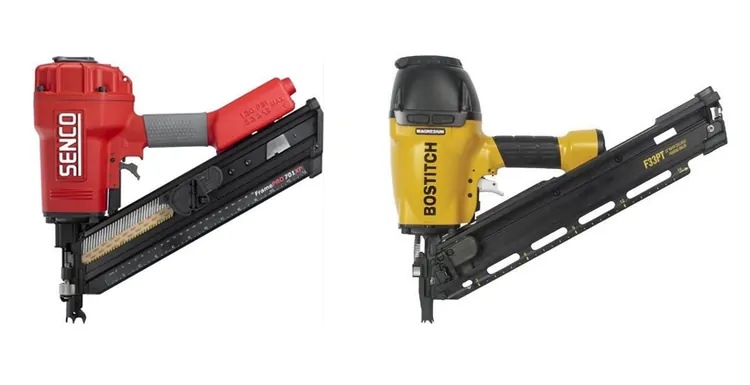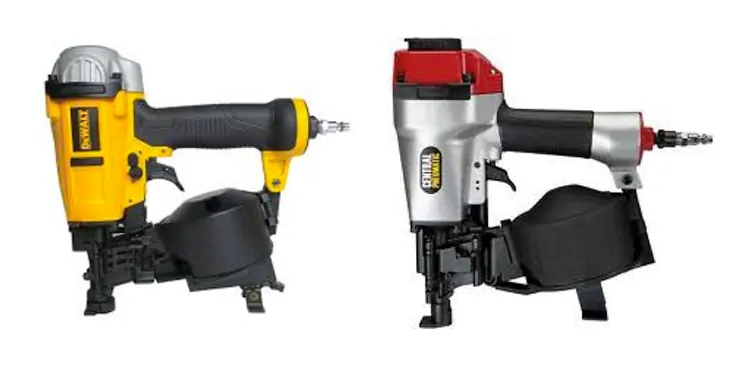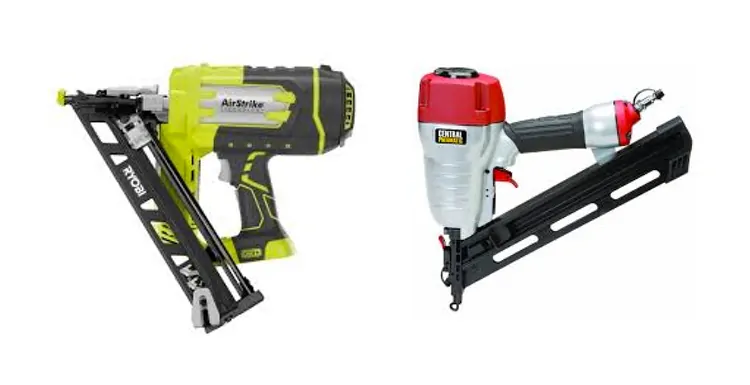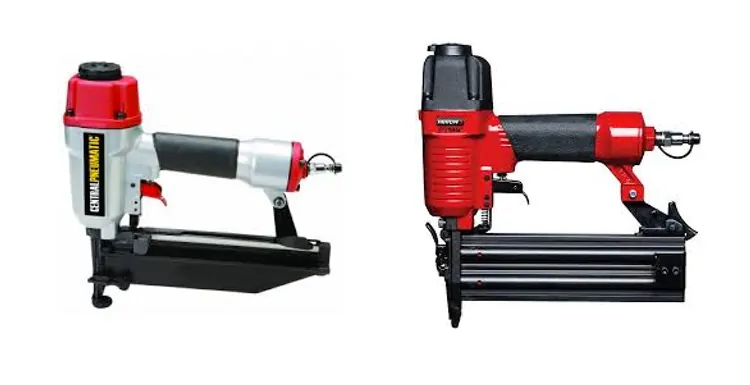If you consistently do home improvement or DIY projects then you may be in the market for a nail gun at some point.
They have the potential to make your life a whole lot easier. One thing you may not be fully versed on is all of the different types of nail guns.
Some nail guns are geared towards the DIYer and others are built for full time construction jobs. There are several different types of nail guns meant for certain tasks.
In this article I talk about how each nail gun can serve a specific job.
The Different Types of Nail Guns
[toc]
First off you should know that there are two main categories of nail guns. Battery and air powered. Battery nail guns are a recent development because of new lithium-ion batteries and better technology.
Generally the higher powered and more demanding nail guns do not use batteries. This is because they require too much power for the battery design to do the job. An air compressor is the way to go for most framing and construction type jobs.
There are a few nailers such as the Paslode that use a replaceable fuel cell. This is a route you can take if you need a cordless type framing nailer. Dewalt and a couple other brands make a battery powered one as well.
Firing Methods
Most of these nailers offer two different types of firing mechanisms. The first style is called sequential firing.
This means that the only way a nail can be fired is to follow this sequence:
- Nail gun nosing must be pressed onto the workpiece
- Trigger is pulled firing a nail
This is the safest and recommended style of firing.
The second style is called dual-contact firing, or bump firing. This type of firing is done by completing these two steps, but these can be in any order:
- Trigger pulled
- Nail gun nosing pressed onto a workpiece
This is used when someone wants to quickly put in several nails. The trigger is pulled in and held in place, then each time the nosing is pushed against the workpiece a nail is fired.
This is a much more dangerous method and generally not recommended.
For more in depth nail gun info go here.
Lets get into what a framing nailer is exactly, along with all the other types of nailers.
Framing Nailers
A framing nail gun is used for large wood projects such as general residential construction and deck building. It uses nails that are usually 2½” – 3½” long and can either have a round or a clipped head.
These are normally very powerful nail guns that are built for industrial use. If you will be working with heavy duty lumber and building the frames of houses then you may want a framing nailer.
Roofing Nailers
Roofing Nailers are obviously used for nailing on new roofs. This usually consists of nailing down asphalt shingles.
You can control the depth at which the gun shoots the nail into the shingle. It is called depth-drive adjustment. This is necessary because shingles are generally fairly soft and too much power will go through the shingle. For this reason the nails themselves have a large flat head.
These nail guns usually come with a coil instead of a straight clip of nails. This allows you to carry more at one time.
Finishing Nailers
Finish nail guns are fairly versatile in the number of things that they can do. Generally they are used for trim, moulding, door jams, cabinetry, and plenty of other light duty wood work. Cabinet making is a prime candidate for finish nailers.
What makes it a finish nailer? The type of nail that it uses:
- 14-16 gauge
- 1″ to 2½” nails
These nails are much smaller than what a framing nailer might use, but a little beefier than a brad nailer. This gives the nail a little bit more holding power for something like crown moulding which can be heavy.
Finish nailers are becoming more available as cordless tools. With improvements in the technology and more demand, lithium-ion finish nailers are quite popular. This is great because if you are a DIYer like me, you don’t need a nailer but for a few minutes or seconds out of the day. This is not long enough to call for an air compressor and hose set up. Simply clicking in a battery and using it real quick is an awesome innovation.
Although a finish nailer would not be a bad choice for a beginner woodworker, I would recommend a brad nailer instead.
Brad Nailers

The brad nailer is the most versatile nailer for the DIYer in my opinion. It can handle plenty of woodworking projects along with trim work and general household repairs. The nails that it uses are strong enough to provide good holding power.
They differ from the finish nailer in a couple different aspects. The first is that the nail rail is not angled like a finish nailer. The others are:
- 18 gauge nails
- ½” – 2″ nail lengths
As with the finish nailers these are being offered in cordless configurations as well as with standard air hookups.
Pin Nailers
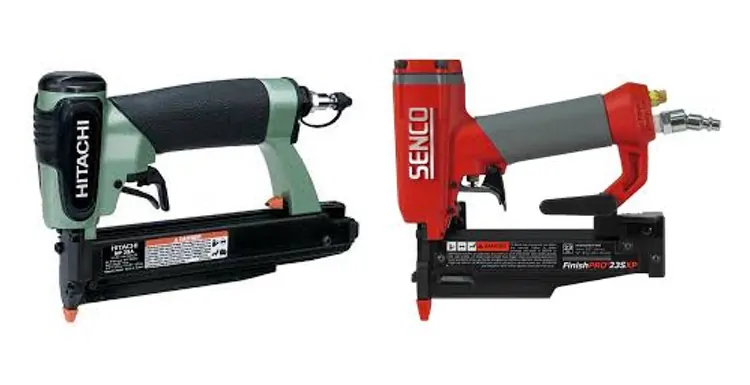
Although small in size and power, if you do a lot of DIY projects this nail gun will come in very handy.
These use 22 or 23 gauge nails that come with or without a head. This type of nail is great for light woodwork such as a birdhouse with trim or a small crate with panels.
It is a great nailer to have in one’s tool repertoire.
Conclusion
Nails guns are great to have around. Especially if you are trying to do work around the house it can make your life a lot easier.
For the beginning woodworker I would start out with the brad nailer before I bought any of the others. Also, unless you plan on doing some serious roofing or framing out a house you probably won’t need the roofing or framing nailers.
After the brad nailer you can get the finish and pin nailers as needed. You may never need them of course.
With the advances in cordless battery technology it is almost a no brainer to get a battery powered nailer. I can only understand getting an air nail gun if you already have the infrastructure set up to use air. Its just so much better when you don’t have to mess with a hose attached to the tool.
Of course with any of these tools it is wise to exercise smart procedures and safety protocol. Always use eye and hearing protection. Check out this article for more tips on nail gun safety.
